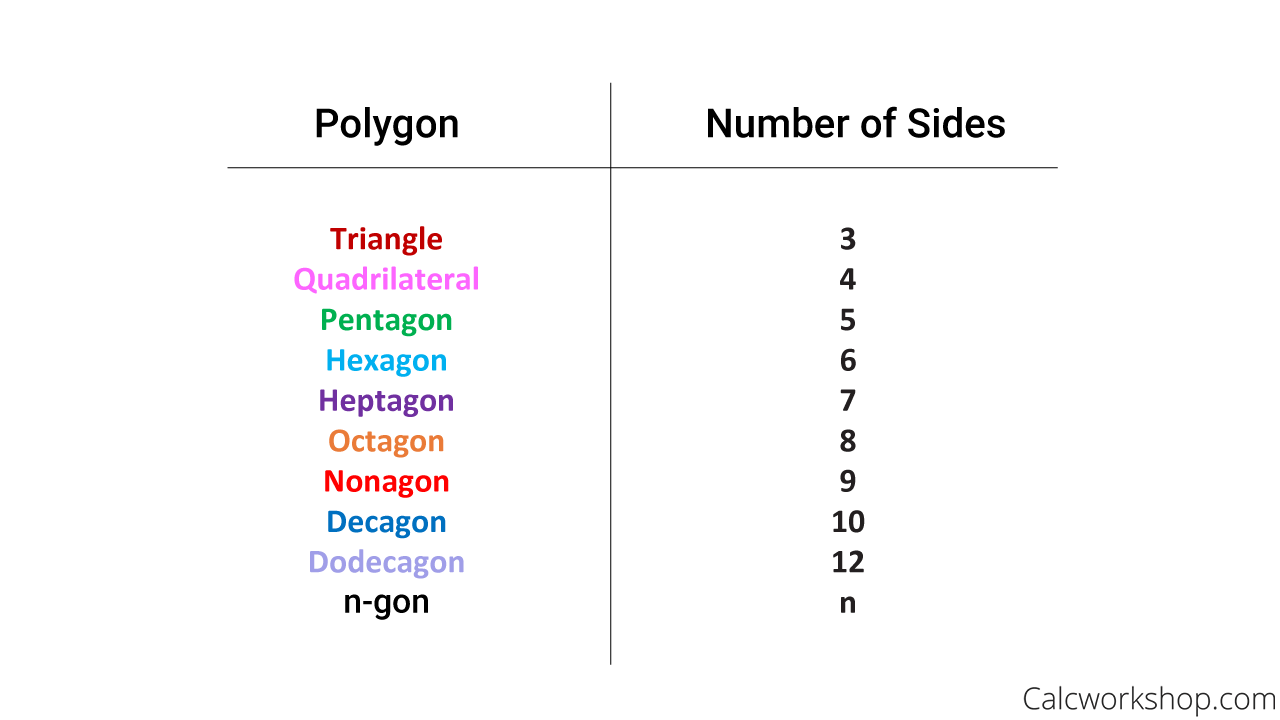Classifying polygons is an essential skill in basic geometry.

Jenn, Founder Calcworkshop®, 15+ Years Experience (Licensed & Certified Teacher)
Did you know that a triangle is the most basic form of a polygon?
Which means we have been working with these figures for quite a while now.
So in today’s lesson you’ll expand your knowledge and learn how to classify these shapes including their names and sides.
In addition, you’ll be able identify their types including if its convex, concave, regular, or irregular.
Finally, you’ll explore the theorem of quadrilaterals and how it’s used to solve for missing measurements.
Let’s get started!
Types of Polygons
So, what is a polygon?
A polygon is a closed sided figure, formed by three or more segments that never cross.

Examples of Polygons

Examples of Non Polygons
And we can further identify it’s type as either convex, concave or regular.
A convex polygon is when no line that contains a side of the polygon includes a point in the interior of the polygon. And a concave polygon is one that is not convex.

Convex vs. Concave Polygons
But what does this really mean?
A convex polygon has no angles that point inward, whereas a concave polygon makes something that looks like a cave, as Math is Fun nicely states, and where angles point toward the interior of the polygon.
And a regular polygon is one that is both equilateral (all sides are congruent) and equiangular (all angles are congruent).
Names of Polygons
But how do we name a polygon?
Polygons are named by the number of sides they have!

Polygons Names and Sides
And just like there are some incredible properties about triangles, there are some important theorems and properties regarding quadrilaterals.
As in a triangle, quadrilaterals have both interior and exterior angles, and the sum of the interior angles in any quadrilateral is 360 degrees!
Why?
Because we can create two triangles from any quadrilateral by forming a diagonal. And if we know that the sum of the interior angles in a triangle is 180 degrees, if we add these two triangles together we get 360!
Cool!
In the video below we’ll learn:
- How to classify a polygon.
- Determine its name by counting the number of sides.
- Decide if the figure is regular, irregular, convex, or concave.
- Use the theorem of quadrilaterals to find angle measures.
Classification of Polygons – Lesson & Examples (Video)
43 min
- Introduction to classifying, naming, and determining types of polygons
- 00:00:17 – What is a polygon? Including concave vs convex polygons (Examples #1-8)
- Exclusive Content for Member’s Only
- 00:12:03 – How to name polygons? What are regular polygons? What is a diagonal of a polygon?
- 00:18:02 – Name the polygon and identify if it is regular or irregular, convex or concave (Examples #9-14)
- 00:27:38 – What are congruent polygons? What is the quadrilateral angle sum theorem? (Examples #15-16)
- 00:34:28 – Find the indicated measure given a quadrilateral (Examples #17-19)
- Practice Problems with Step-by-Step Solutions
- Chapter Tests with Video Solutions
Get access to all the courses and over 450 HD videos with your subscription
Monthly and Yearly Plans Available
Still wondering if CalcWorkshop is right for you?
Take a Tour and find out how a membership can take the struggle out of learning math.